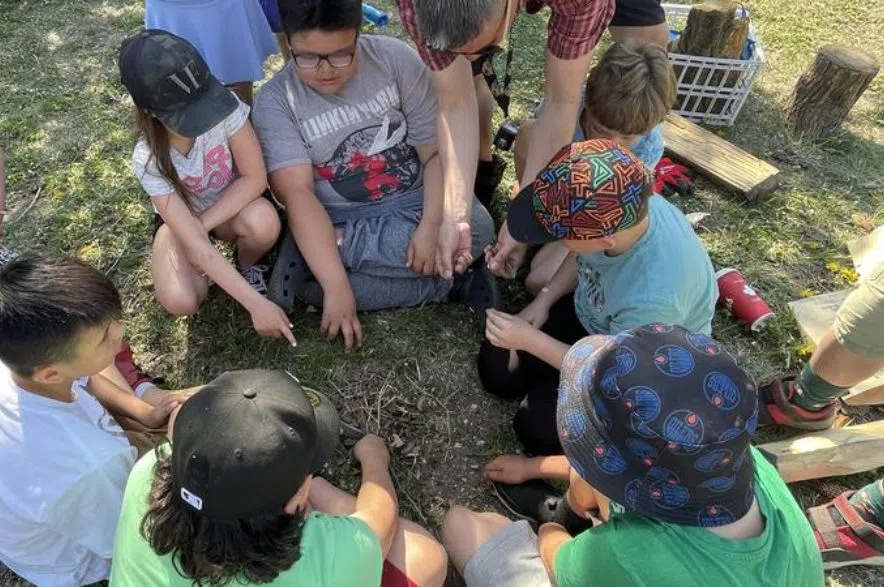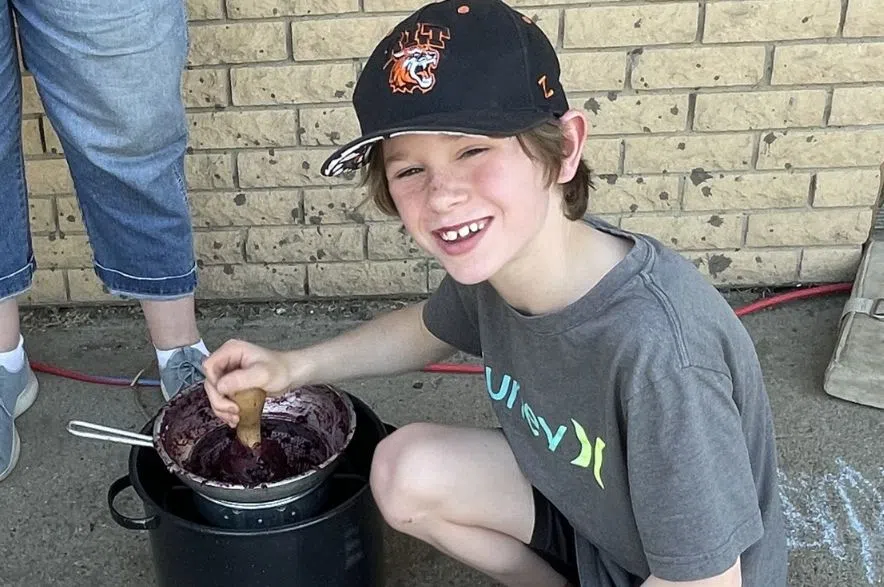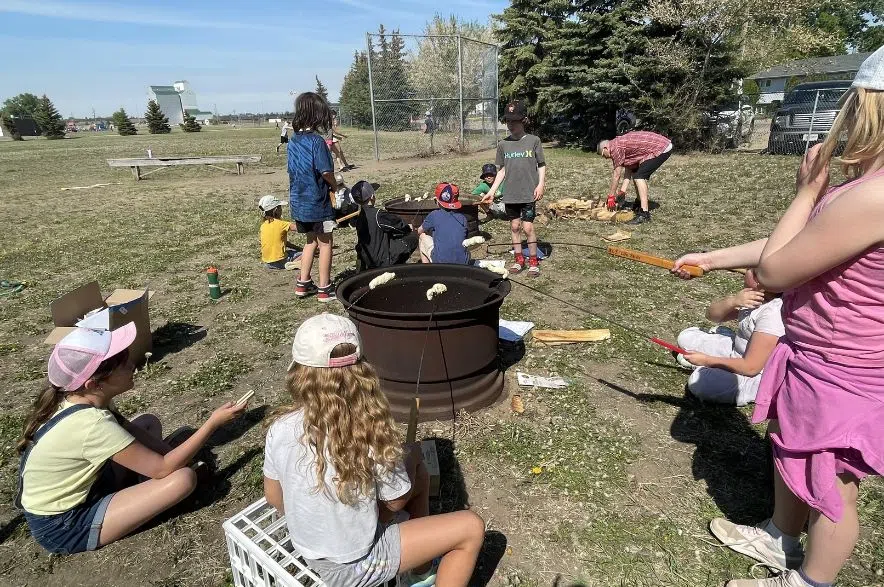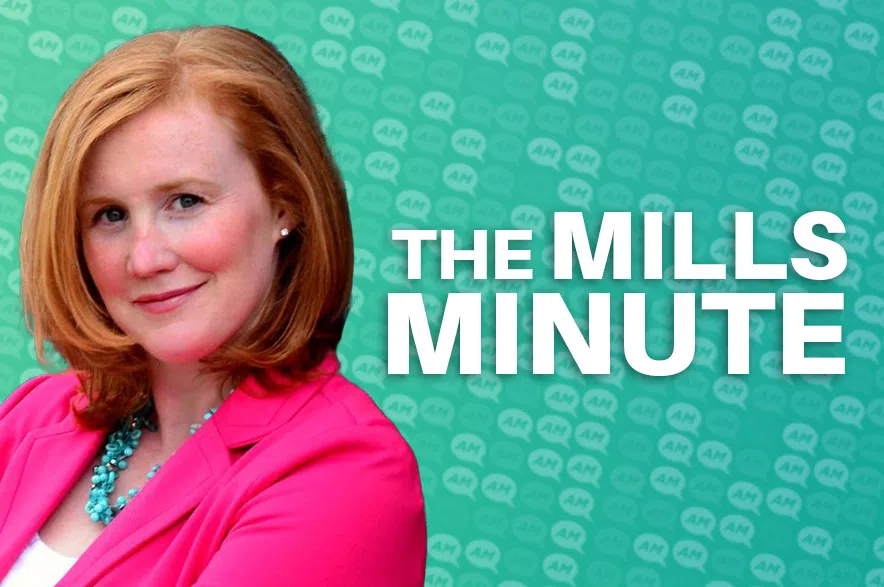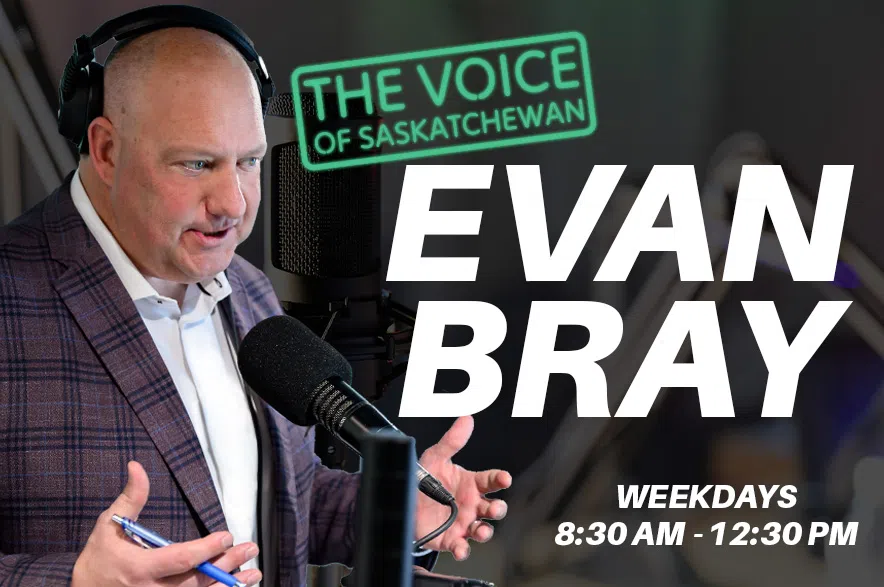In the glow of a spring day at Battleford Central School, Grade 3 and 4 students gathered around small campfires, laughing as they struck flint, cooked bannock on sticks and tasted fresh berry jam.
For many, it was — in their words — “the best day ever.”
Read more:
- Most Canadians think the country is making progress on reconciliation: poll
- Centre for Truth and Reconciliation to release names of residential school priests
- Thousands raised to help eight-year-old girl with mould toxicity breathe easier
At the centre of the lesson was Grade 4 teacher Laurie Sneddon, recently recognized by the Saskatchewan Teachers’ Federation (STF) for advancing truth and reconciliation with her students.
She organized a land-based learning day with Knowledge Keeper Barry Shingoose and retired Indigenous education consultant Sherron Burns, blending fire teachings with traditional food and storytelling.
“We wanted to share that knowledge with a lot of our students who do not have it,” Sneddon said. “And to help them understand that when we share cultures, we all get to learn new things and become better people.”
The hands-on lessons stuck.
“They all said, ‘This is the best day ever… better than camp. I can’t believe we get to do this at school,’” she laughed.
“We can tell them all the time we can learn from each other, but when they actually see it and do it — that lesson really sticks.”
With roughly 35 per cent of students identifying as Indigenous, she believes it’s important that children see their own traditions reflected in their schools.
Sneddon said the most powerful moments came when quieter students found confidence.
“Some of the children were using flint strikers to try and start a little fire, and it’s really hard to do,” she said.
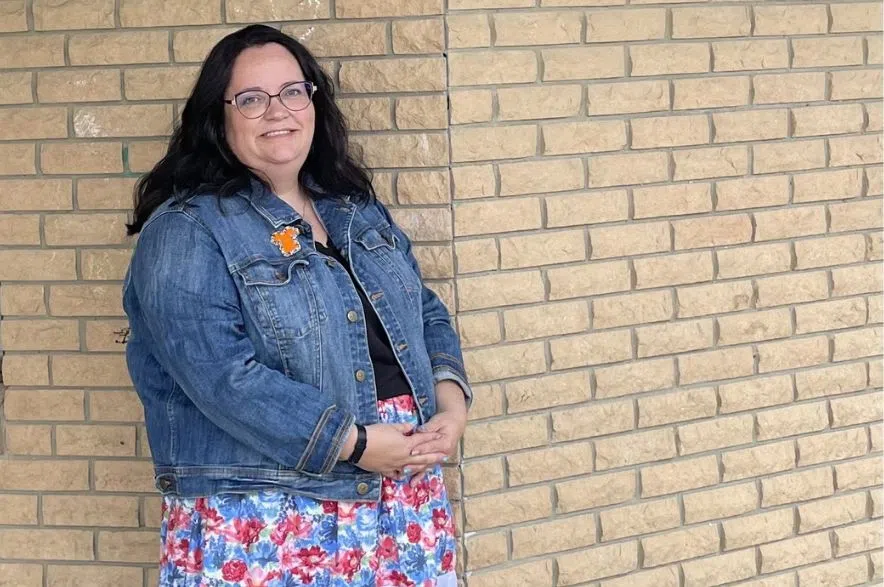
Battleford Central School teacher Laurie Sneddon, recognized by the Saskatchewan Teachers’ Federation for her work advancing truth and reconciliation with her students. (Laurie Sneddon/Submitted)
“When they could do that, and Mr. Shingoose was encouraging them, they had pride in what they were able to do. That to me, when you see that little spark, is what most educators want to see.”
For Sneddon, who has been teaching for 26 years, those sparks are also tied to her own journey. Though her family always knew they were Métis, she admits, “we didn’t really know a lot about what that meant.”
Over the past decade, she and her relatives have started reconnecting — learning to bead, sewing ribbon skirts, reviving fiddle music, and attending Back to Batoche.
“The more that I learn myself, the more that helps me teach my children and show them that I’m always learning about my culture, and you can learn about culture too,” she said.
Her recognition came almost by chance, after a colleague shared news of the fire and bannock day with the STF. But Sneddon pointed out that she’s part of something much larger.
“I work with amazing educators, who are all actively trying to bring truth and reconciliation to our students,” she said.
“I’ve seen amazing lessons in my school where teachers are using stories and art, and just really working with students to help them understand the ideas of every child matters.”
“I’m just one of many who are trying very hard to help our next generation learn about our past and what it means.”
As National Truth and Reconciliation Day approaches on Sept. 30, the school will continue weaving cultural learning into classrooms — from drumming and song to orange fabric ties carrying messages of hope for survivors and those who didn’t make it home.
For Sneddon, the work is ongoing.
“It’s a journey … and educators and students are learning together.”
